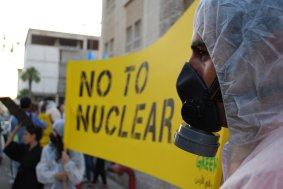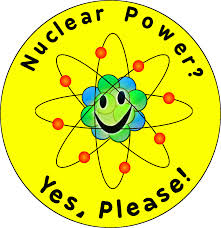There are many tricky questions around nuclear power, and perhaps the most head-scratching one is, why did the most earth-quake prone country in the world embrace this technology so readily? The well-known environmental scientist Amory Lovins was just one to state the bleeding obvious with this remark: “An earthquake-and-tsunami zone crowded with 127 million people is an un-wise place for 54 reactors”. Combine this with a secretive governmental and industry approach to energy production in a cash-strapped economy, and disaster was almost inevitable. There were a number of earthquake-related shut-downs and cover-ups before the Fukushima disaster essentially blew the whistle on the whole industry, turning the majority of Japan’s population against nuclear power almost overnight. After Fukushima, the generation of nuclear power worldwide fell dramatically largely due to the shut-down of Japan’s 48 other nuclear power plants, though facilities in other countries were also affected by the publicity.
Yet it’s reasonable to ask whether other countries, such as Australia, should reject nuclear power outright because of Japan’s bad example. Australia rarely suffers serious earthquakes – South Australia almost never. And there may be safer ways to utilise nuclear fission as energy – now or in the near future – than has been employed in Japan or other countries since the sixties. So, just how do we generate nuclear power, how do we get rid of waste material, and are there any developments in the pipeline that will make generation and storage safer in the future?
How’s the energy produced?
Much of the following comes from How Stuff Works, but for my sake I’m putting it mostly into my own words. We derive energy from nuclear fission in the same way that we derive energy from coal-fired power stations – by turning water into pressurised steam, which drives a turbine generator. The difference, of course, is the source of the heat – uranium rather than carbon-emitting coal. Nuclear reactors create a chain reaction which splits uranium nuclei into radioactive elements, releasing energy in the process. A thorium fuel cycle rather than a uranium one is also possible, though with limited market potential at this point.
Uranium, in the form of isotope U-235, can undergo induced fission relatively easily. However, naturally occurring uranium is over 99% U-238, so the required uranium has to be enriched so that the U-235 content, which is naturally at around 0.7%, is increased to around 3% (weapons-grade uranium enrichment requires over 90% U-235). The enriched uranium is formed into pellets, each about 2.5 cms long and less than 2cms in diameter. These are arranged into bundles of long rods which are immersed in a pressure vessel of water. This is to prevent overheating and melting. Neutron-absorbing control rods are added to or subtracted from the uranium bundle, by raising or lowering, and these control the rate of fission. Completely lowering the control rods into the bundle will shut the reaction down.
The fissioning uranium bundle turns the water into steam, and then it’s just the technology of steam driving the turbine which drives the generator. But then there’s the matter of radio-activity…
Before we get into that, though, I should mention there are different kinds of reactors, which use different systems and different cooling agents. I’ve been rather cursorily describing a Light Water Reactor, the most common type. They use normal or regular water, and there are three varieties: pressurised water reactors, as described; boiling water reactors, and supercritical water reactors. There are also heavy water reactors which use water loaded with more of the heavier hydrogen isotope called deuterium. But whatever is used as a coolant and/or a neutron moderator (a medium that moderates the speed of neutrons, enabling them to sustain a chain reaction), the issue of radio-activity needs to be dealt with.
What are the safeguards against radioactive decay?
What I previously termed ‘induced fission’ involves firing neutrons at U-235 nuclei. The nucleus absorbs the neutron and then becomes unstable and immediately splits, releasing a great deal of heat and gamma radiation from high energy photons. Among the products of the split are fissile neutrons, which then go on to split more nuclei, a chain reaction which can be controlled with the manipulation of control rods as described above. Uranium 235 and Plutonium 239 are among the very few fissile nuclei – those that lend themselves readily to nuclear chain reactions – that we know of.
The trouble with induced fission is that the products of the reaction are vastly more radioactive than the fissioned material, U-235, and their radioactive properties are long-lasting, leading to the obvious problems of safeguard, storage and elimination.
In standard light water reactors, the pressure vessel is housed in concrete, which is in turn housed in a steel containment vessel to protect the reactor core. Refuelling and maintenance equipment is housed within this vessel. Surrounding this we have a concrete building, a secondary containment structure to prevent leakage and to protect against earthquakes or other natural (or man-made) disasters. There was no such secondary structure at Chernobyl. The nuclear industry argues that, when these safeguards are properly maintained and monitored, a nuclear power plant releases less radioactivity into the atmosphere than a coal-fired power plant.
Even if this wins some people over, there are the really big issues of mining and transportation of uranium and nuclear fuel and storage of radioactive waste. According to the USA’s Nuclear Energy Institute, 2000 metric tons of high-level radioactive waste are produced annually by the world’s nuclear reactors, which is hazardous to all life forms and can’t be easily contained. This radioactive material takes tens of thousands of years to decay. Low-level waste, which contaminates nuclear plants and equipment, can take centuries to reach safe levels.
Storage, or possible recycling, of waste is probably the major issue for the nuclear power industry’s future, in spite of all the understandable current attention given to melt-downs. The How Stuff Works website summarises the present situation:
Currently, the nuclear industry lets waste cool for years before mixing it with glass and storing it in massive cooled, concrete structures. This waste has to be maintained, monitored and guarded to prevent the materials from falling into the wrong hands. All of these services and added materials cost money — on top of the high costs required to build a plant.
In my next, and hopefully last, post on this subject (for a while at least), I’ll focus more on this storage issue, and on other developments in nuclear fuel, such as they are. I’ll be relying particularly on the MIT interdisciplinary study ‘The Future of the Nuclear Fuel Cycle’, which came out in 2011 – just when the Fukushima-Daiichi disaster hit the headlines…



